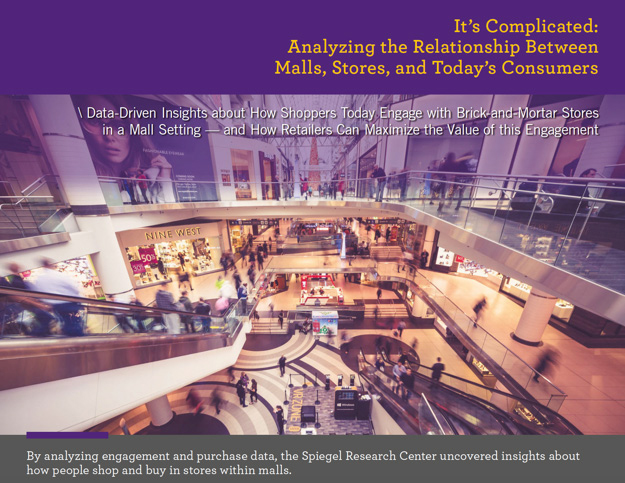Retail Marketing
How Engagement Shapes Consumer Behavior Across Retail Settings
The rise of e-commerce, digital marketing, and mobility have radically transformed the ways shoppers engage with brands and stores. The Medill Spiegel Research Center is studying these changes and uncovering data-driven insights that retailers can use to maximize the value of their engagement to drive increased purchases in both brick-and-mortar and online settings.
Our first study in this series looks at how shoppers engage with brick-and-mortar stores in a mall setting. Subsequent reports will analyze how this behavior changes when shoppers are in a digital mall and other settings.
Study No. 1: Engagement in Malls
It’s Complicated: Analyzing the Relationship Between Malls, Stores, and Today’s Consumers
Questions We Address
- Do shoppers go to malls to visit one store or to browse among several?
- Does engagement at the mall-level matter?
- Is real-time, location-based marketing effective??
- Does engagement have a different impact on “planners” than on “impulse shoppers?”
- Is it more important for stores in a mall to play offense or defense?
- Does engagement exclusivity matter?
- What type of engagement has the greatest impact on sales?
Insights into How Shoppers Engage with Stores in Shopping Malls
Number of Stores Visited Per Mall Visit
Our research found that the lion’s share of mall shoppers are either one-store shoppers (36%) or serial browsers who visit four or more stores (44%).
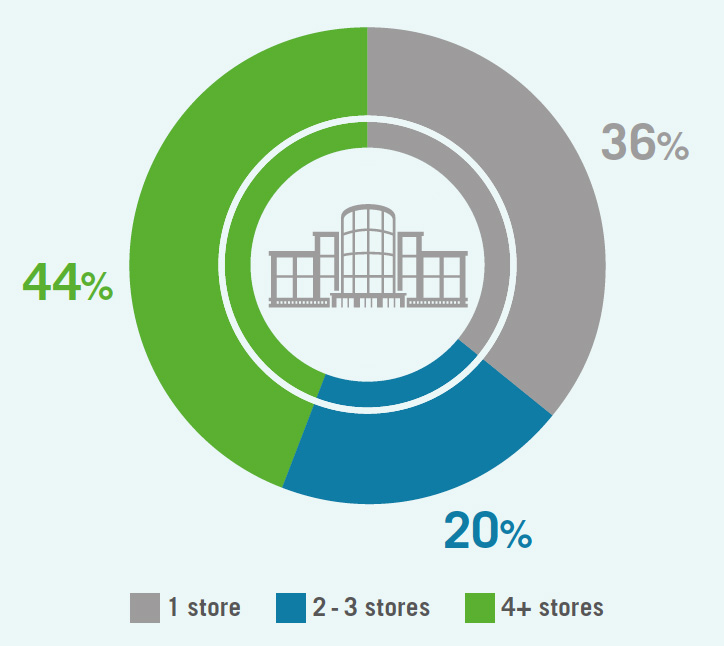
Impact of Real-Time Push Messages on Store Visits
Shoppers of all loyalty levels visited additional stores after receiving real-time, location-based push notifications (RTMs). The impact, however, was greater among the most-loyal shoppers, who were 2.70x more likely to visit additional stores after receiving a message, whereas shoppers of all other loyalty levels were only 1.78x more likely.
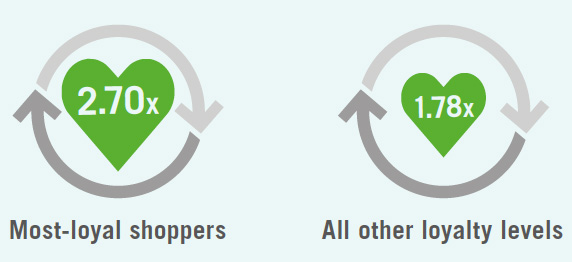
Likelihood of Visiting Additional Stores After Receiving Real-Time Push Messages
For shoppers who plan their mall trips ahead of time by liking or clipping ads in their news feed, their decision of how many stores to visit was largely unaffected by receiving RTMs. Non-planners, however, were more likely to visit additional stores after receiving an RTM.
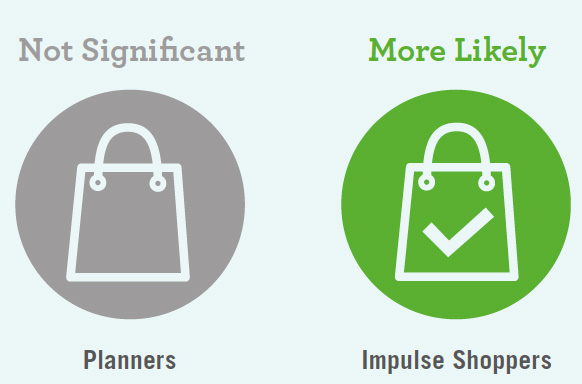
Exclusivity’s Impact on Store Visits by Potential Customers
Shoppers who “favorited” only Store A were significantly more likely to purchase from Store A than shoppers who favorited Store A and other stores.
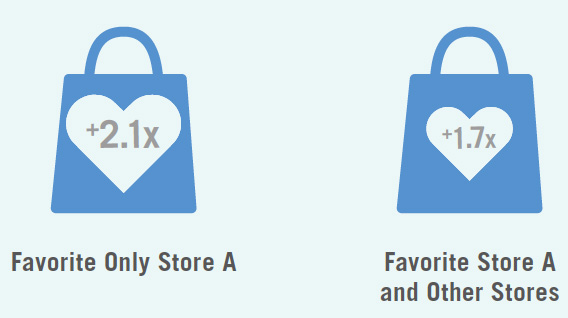
Exclusivity’s Impact on Purchase Amount by Existing Customers
When existing customers favorited only Store A, their future purchases increased by nearly 8%. But when existing customers favorited Store A along with other stores, it had a slightly negative impact on future purchases.
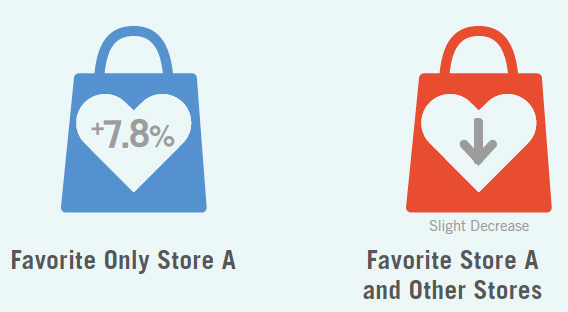
Dive Deeper Into Branded App ROI
To learn more about Spiegel’s research into how engagement via branded apps influences purchase behavior and customer value, we invite you to explore our full library of content on the subject.
Academic Journal Publications
- Kim, S.J., Wang, R. J.H., Maslowska, E., & Malthouse, E.C. (2015). The Effects of Adopting and Using a Brand’s Mobile Application on Customers’ Subsequent Purchase Behavior, Journal of Interactive Marketing, 31, 28-41.
- Wang, R, Malthouse, E.C., Krishnamurthi, L. (2015). On the Go: How Mobile Shopping Affects Customer Purchase Behavior, Journal of Retailing, 91(2), 217-234.
- Wang, Kim and Malthouse (2016), Branded Apps and Mobile Platforms as New Tools for Advertising, The New Advertising: Branding, Content and Consumer Relationships in the Data-driven Social Media Era, edited by Ruth Brown, Valerie Jones and Bryan Ming Wang, Praeger, Santa Barbara, CA.
White Papers and E-Books
- Wang, R. (2016). Shopping on the Go: How Mobile Usage Affects Customer Purchase Behaviors, Medill Spiegel Research Center.
- Collinger, T. Branded App ROI: Evidence of the Value of Consumer Engagement Via Branded Apps, Medill Spiegel Research Center.

